King Houndekpinkou: space-age meets tradition in ceramic art
Paris-based artist King Houndekpinkou’s other-worldly ceramic art creations fuse ancestral pottery traditions with space-age video games.
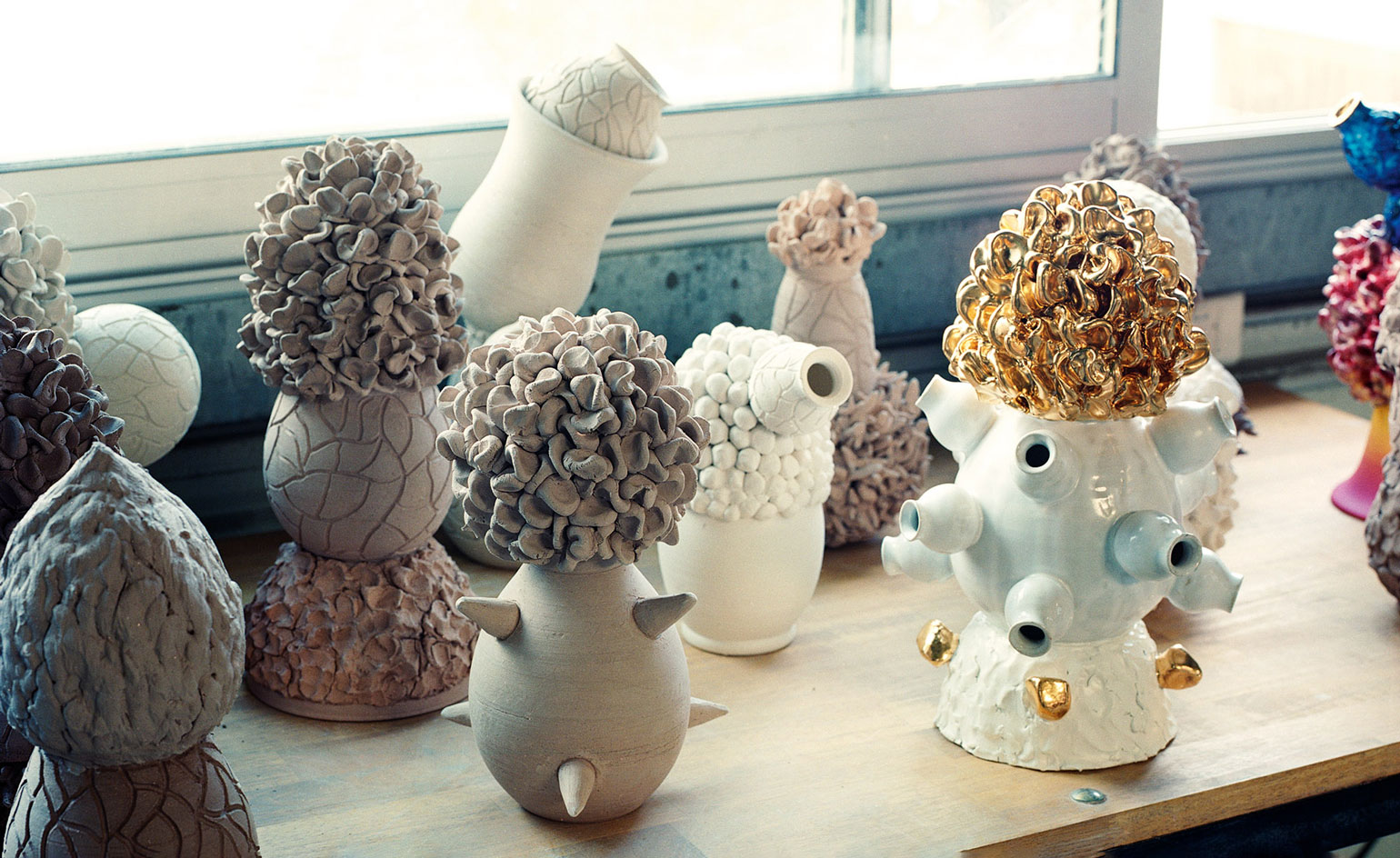
Alexandre Guirkinger - Photography
Some of the 40 ceramic works King Houndekpinkou is currently creating for his next solo show, ‘Dans Mon Jardin...’, at Paris’ Galerie Vallois. Left and centre are unfired works, which have been left to dry next to a window, while far right is a completed sculpture in white and gold
Benin in West Africa, and Japan in the Far East. Ancestral pottery and space-age video games. King Houndekpinkou, an emerging ceramic artist based in Paris, pulls together these seemingly disparate influences to create sculptures characterised by bursts of bold colour, playful spikes and cracked surfaces. They are not indebted to any style or school, but instead reflect his background and perspective: a life defined by happy accidents.
Of Beninese origin, Houndekpinkou, 34, was born and raised in the suburbs of Paris. As a video game-obsessed kid, he developed a fascination for Japan’s pop culture. ‘My favourite was Zelda for its colours and motion graphics. I also loved the solution-seeking side of the games. For me, Nintendo also meant getting to spend time with my cousin, who was my playmate,’ recalls the ceramist. Today, his creative universe still feeds off this childhood passion: he is fond of dynamic forms, eye-popping colours and human connection.
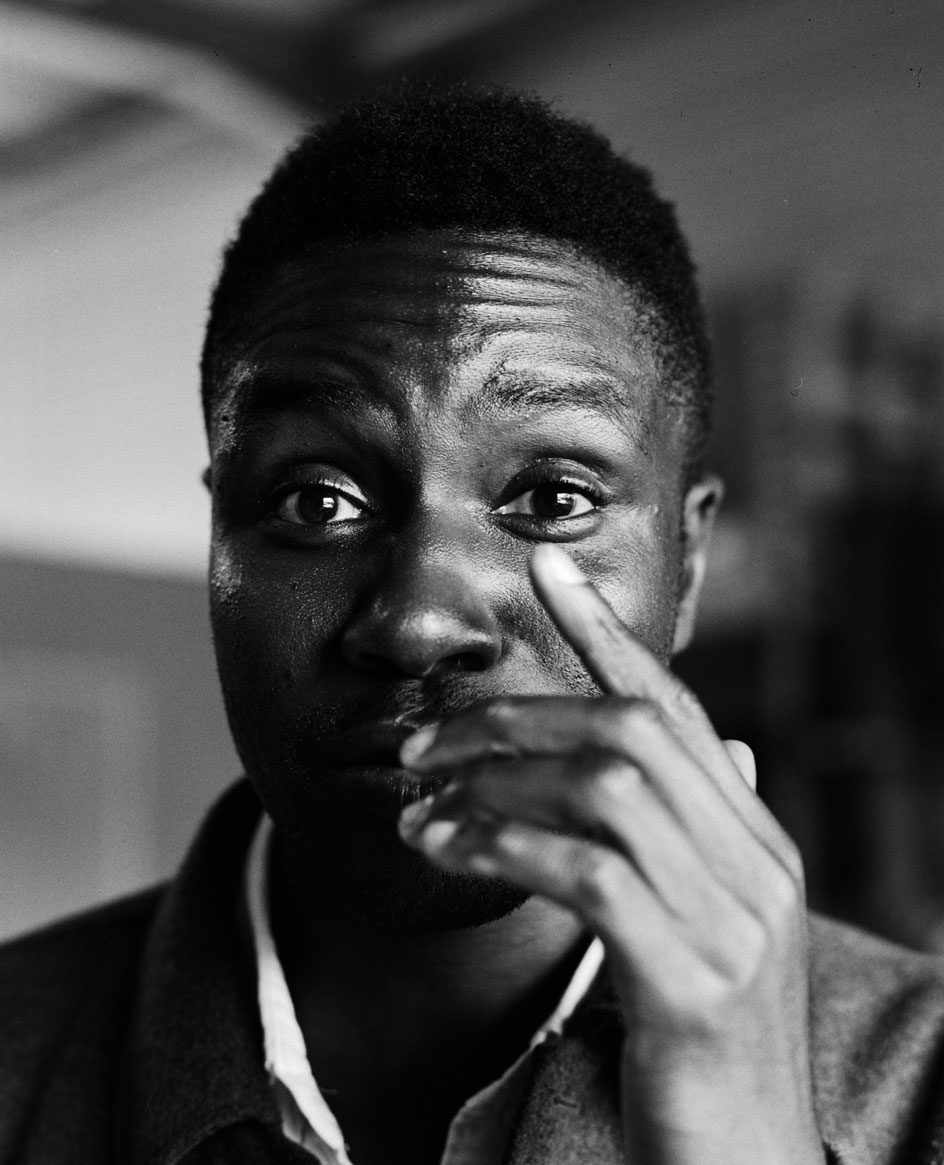
Ceramic artist King Houndekpinkou in his studio in Antony, a southern suburb of Paris
Houndekpinkou made his first trip to Japan when he was 22. There he stumbled upon traditional ceramics, which sparked his curiosity. Back in Paris, he trained with a Japanese ceramics teacher, Kayoko Hayasaki. While accompanying Hayasaki to central France for a project with Japanese ceramicists, he met the ceramics master Toshiaki Shibuta, whom he now refers to as his spiritual father. ‘I was drawn to the animist rituals they practised. They prayed to the “kiln god”, drank sake, heaped up salt and scattered flowers to ward off evil, so that the firing of their ceramics would go well,’ explains the artist. ‘Our countries are 13,000km apart, but what a resemblance! Shintoism and African Voodoo share a strong connection to nature. Our rituals are about humility.’
‘Our countries are 13,000km apart, but what a resemblance between Shintoism and Voodoo’
Following this epiphany, Houndekpinkou made a second trip to Japan, this time to Bizen, home to one of the oldest kilns in the country. Since then, ceramics has become a medium for interrogating his identity and his roots; his 2016 Terres Jumelles (Twin Soils) project uses ceramics to foster cross-cultural dialogue between Benin and Japan. Each year, he travels to both countries, bringing back to Paris a bit of soil from each location that he blends into a hybrid clay.
‘The nature of clay – whether it is soft or sturdy, or what its mineral content is – depends on its geographical origin. I recognise each variety by its colour and texture.’ The artist experiments with different ‘cocktails’ of clay until he arrives at a formula that suits his purpose. ‘If I want something sturdy, I opt for sandy clay, which absorbs thermal shock. Touching the soil with my fingers, I feel so peaceful, spiritual and playful,’ he says.

Houndekpinkou kneads the clay for hours to remove any air bubbles, like a baker preparing a perfect dough
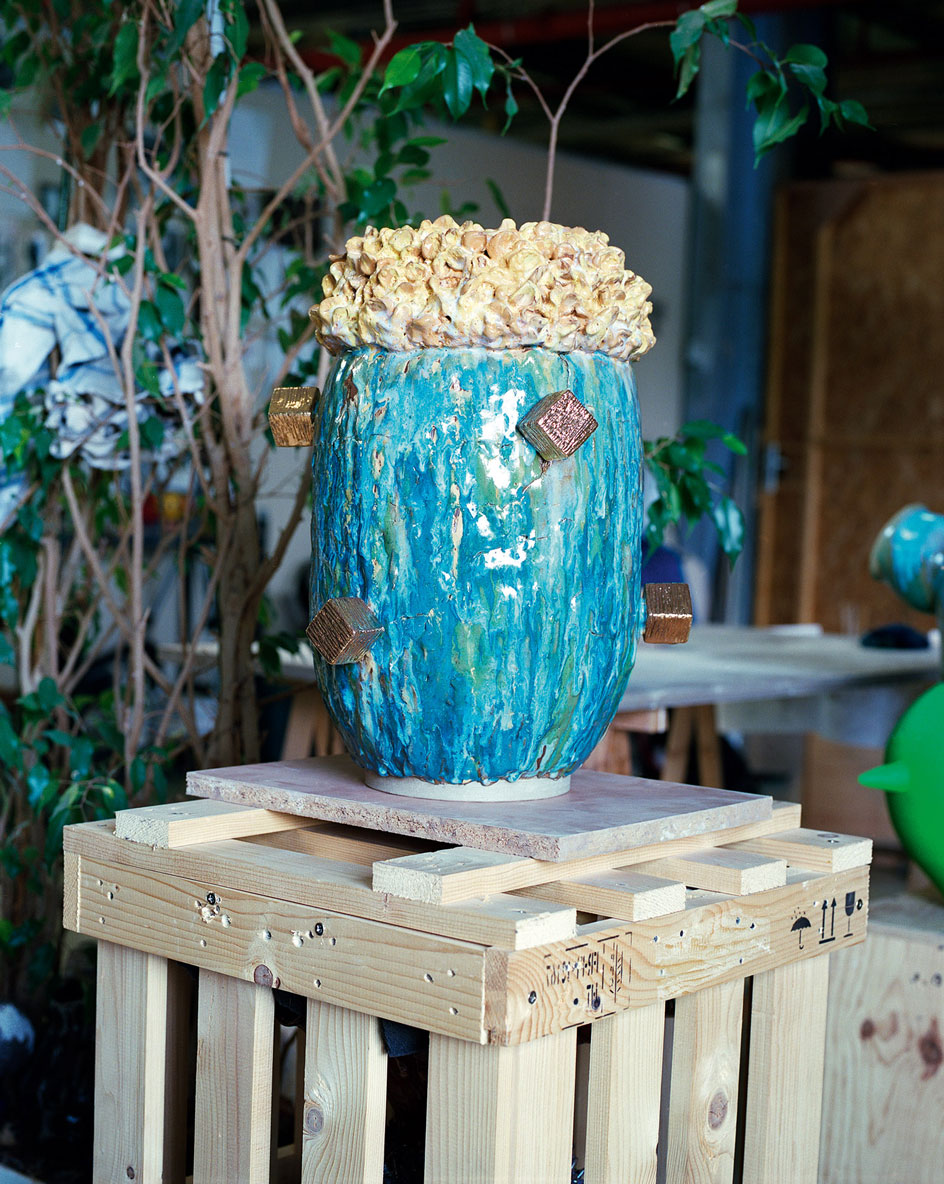
One of the artist’s latest creations, this untitled ceramic sculpture features multiple layers of glaze in blue, yellow, orange and green, and is made of a mix of clays collected in Sè (Benin), Iowa (US), Bizen and Tamba (Japan)
His sculptures have ranged from huge vessels to more complex compositions. For example, using an upturned bowl as a base, he uses clay to attach more bowls, cups and handles to it, creating an evolutionary form of pottery. ‘I assemble functional pieces to become sculptures.’ While the Mingei movement, an influential force within Japanese culture, is based on finding beauty in daily and utilitarian objects, Houndekpinkou instead elevates them to another dimension.
One of Houndekpinkou’s signatures is an inventive use of glaze. ‘I was inspired by dripping liquid on a Voodoo altar,’ he explains, showing a few dozen pots of pigment and notebooks full of his own recipes. ‘It can take a combination of hundreds of these powders to obtain a particular colour or texture. Sometimes I rework a piece that is ostensibly finished, applying another layer of glaze and firing it again. Then a new piece is born!’ He thrives on the alchemy of technical prowess and creative experimentation. ‘The more technically trained you are, the more creative you can be. To be technical, you need discipline and balance.’
Wallpaper* Newsletter
Receive our daily digest of inspiration, escapism and design stories from around the world direct to your inbox.
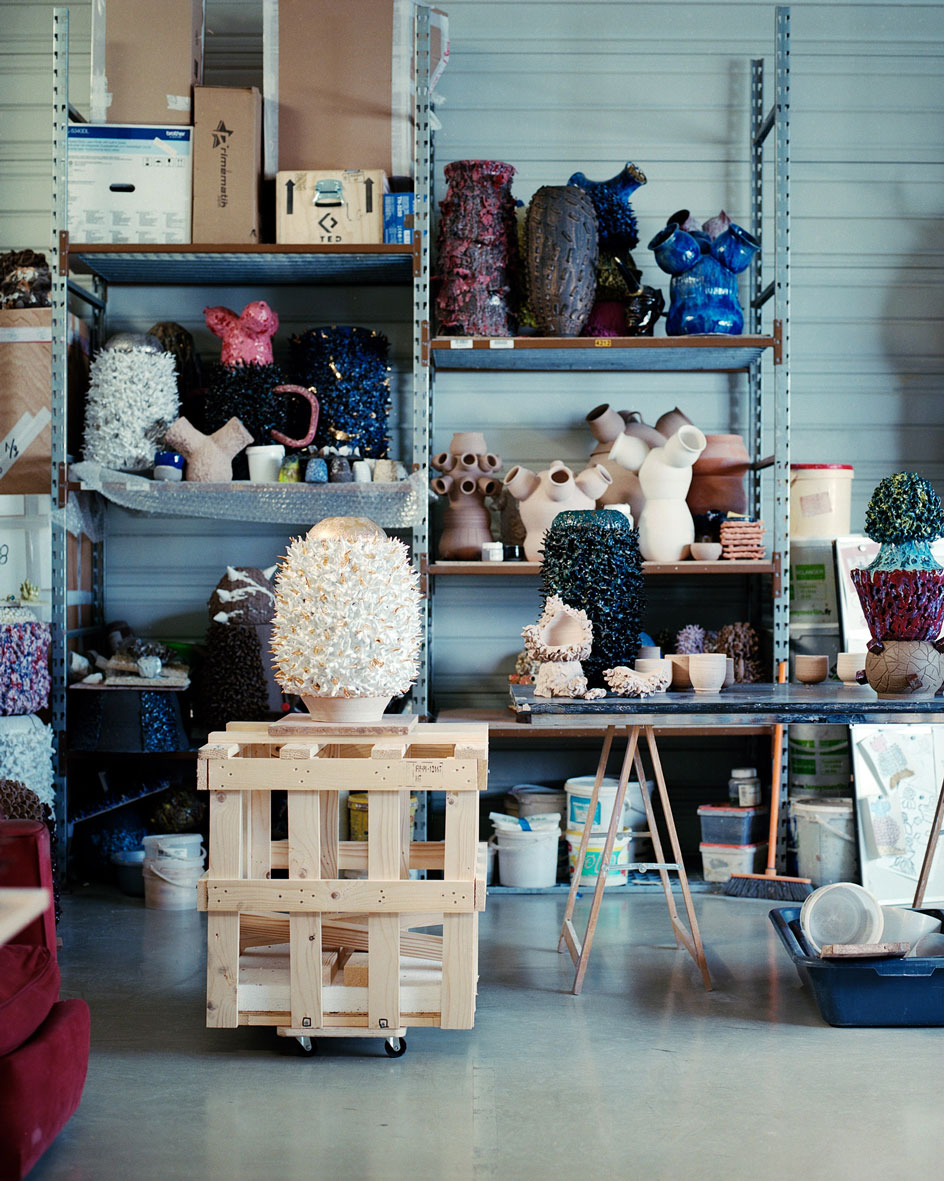
Houndekpinkou’s Parisian studio, with, sitting atop an empty wooden crate, The Widow of Light: The Widow of Light: Don’t Let this Gold Fool You, I’m Made of Darker Colors II (2020), a ceramic sculpture made from white clay from Westerwald, Germany, and finished with white glaze and gold
As featured in the September 2021 issue of Wallpaper*, on newsstands and available for free download
‘My studio wall is a self-portrait of sorts. If ever my brain is printed out, it should look exactly like this. Everything is logically connected, in a never-ending story’
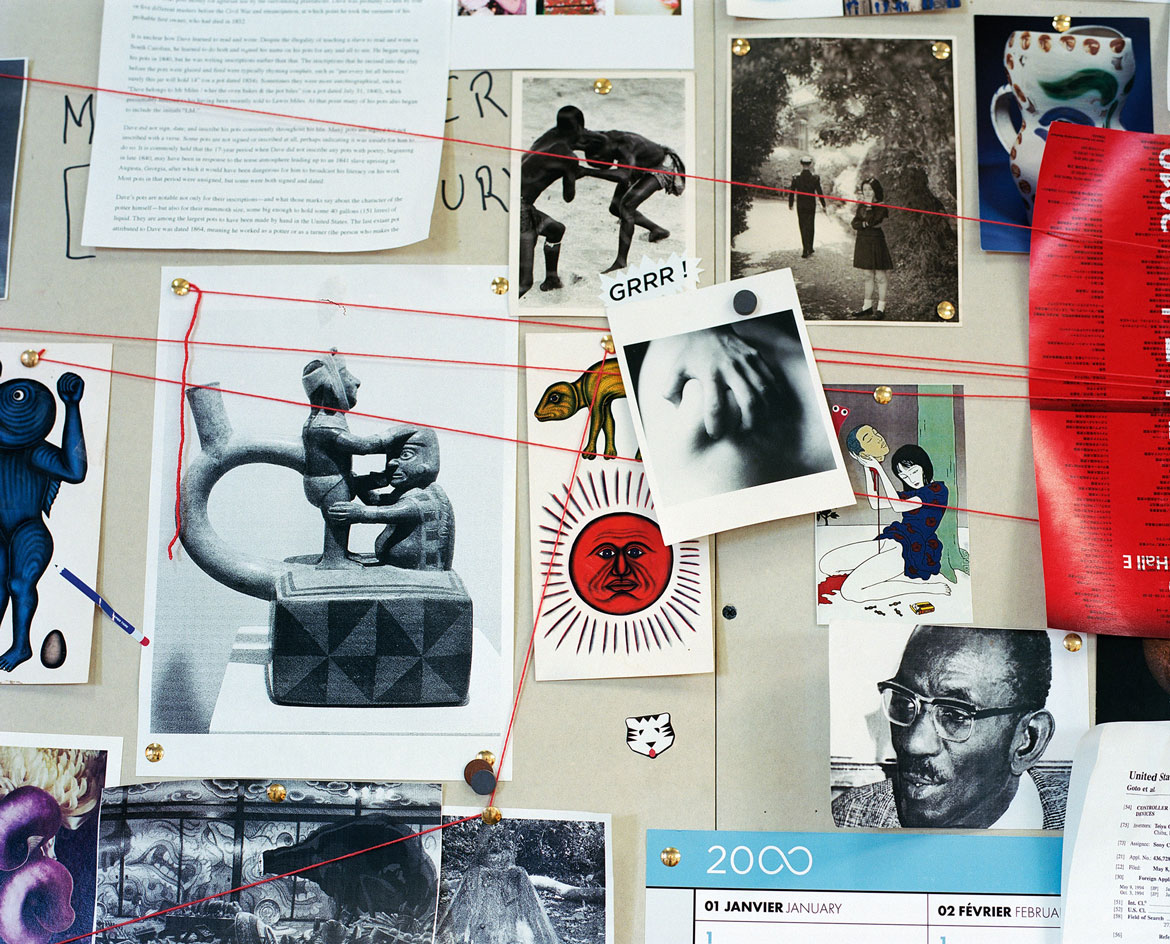
Among the pictures pinned to Houndekpinkou’s 11m-long inspiration wall are, from left, an image of an ancient Peruvian Moche erotic ritual vessel; a black-and-white photo of young Senegalese wrestlers; a postcard featuring the work of Beninese artist Cyprien Tokoudagba; an image of the work of Japanese artist Toshio Saeki; a portrait of Senegalese historian and anthropologist Cheikh Anta Diop
He then switched the conversation to another of his passions: his wheels. ‘I love feeling the wind and speed when I’m riding a motorbike. And to get it working, I need to be mechanically precise. It’s exactly like pottery,’ he says, pointing to a photo of an old motorbike pinned on the wall of his studio. A red thread links this image to another photo, a bit further down on the same wall: a portrait of George Ohr, an idiosyncratic American ceramic artist known as ‘the mad potter’.
Back in 2017, Houndekpinkou was among a group of artists featured in a show in Florida that paid tribute to Ohr. The motorbike, it turns out, once belonged to Ohr. Many more photos, notes and press clippings fill the wall. Is it a mood board? ‘Not exactly,’ he says. ‘It’s a self-portrait of sorts. If ever my brain is printed out, it should look exactly like this. Everything is logically connected, in a never-ending story.’
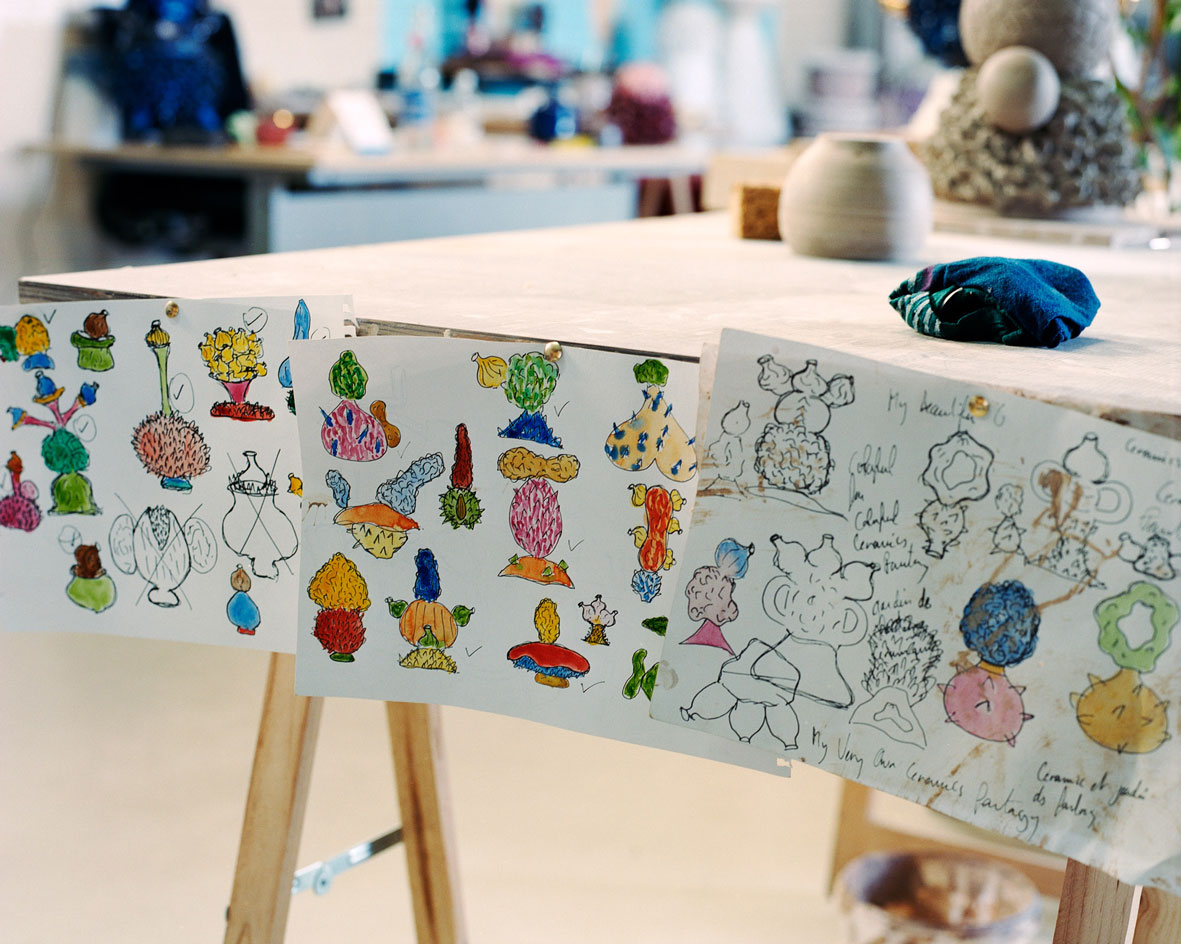
Watercolour sketches of some of the 40 ceramic sculptures created by the artist for his upcoming solo show, ‘Dans Mon Jardin…’, at Paris’ Galerie Vallois, where the artworks will be arranged to form a small garden
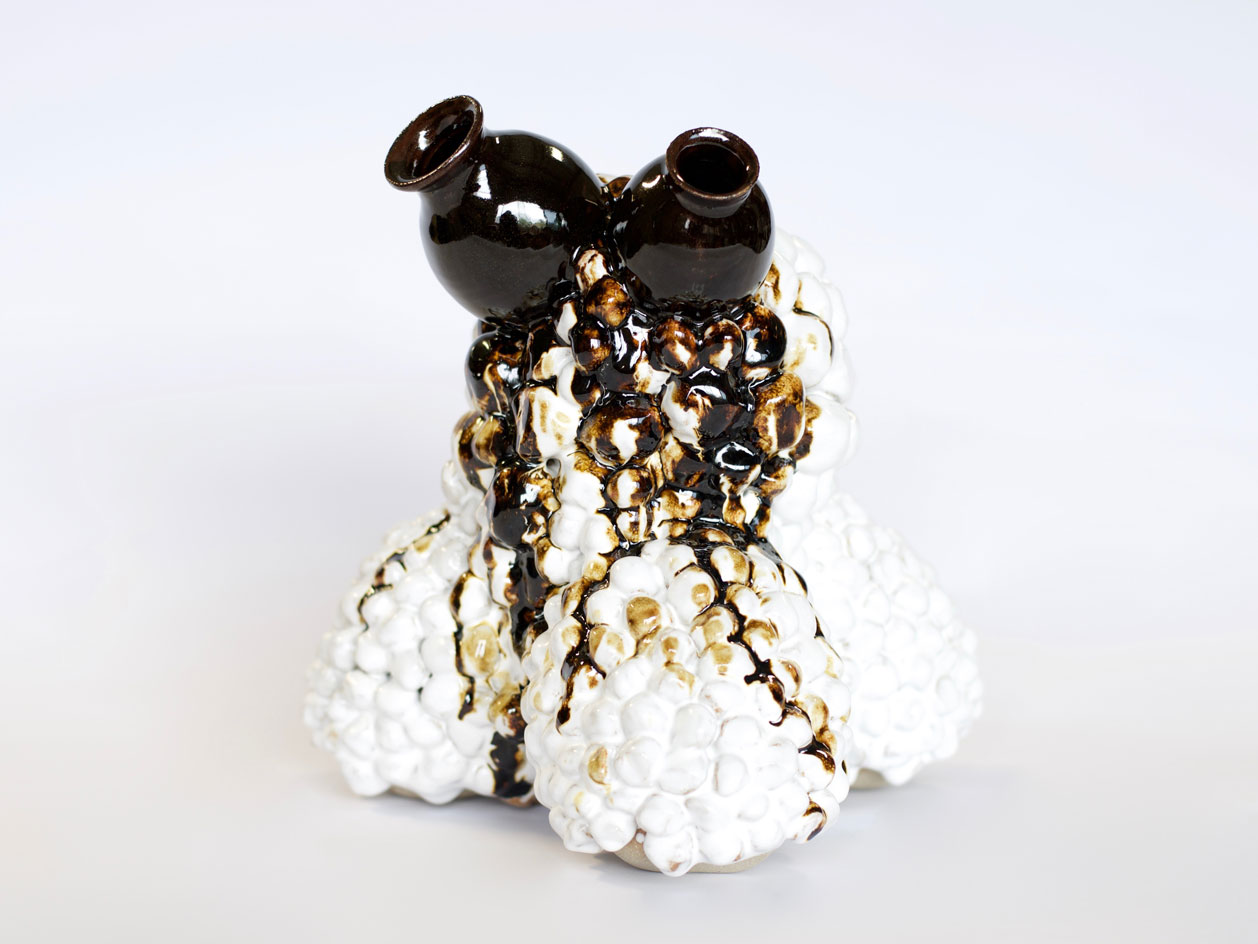
Le Triboutellis à Sève Noire, 2021. Glazed ceramics: blend of white and black stoneware from Iowa, U.S - Tamba, Japan – Sè, Benin – Bizen, Japan. White and black glazes.
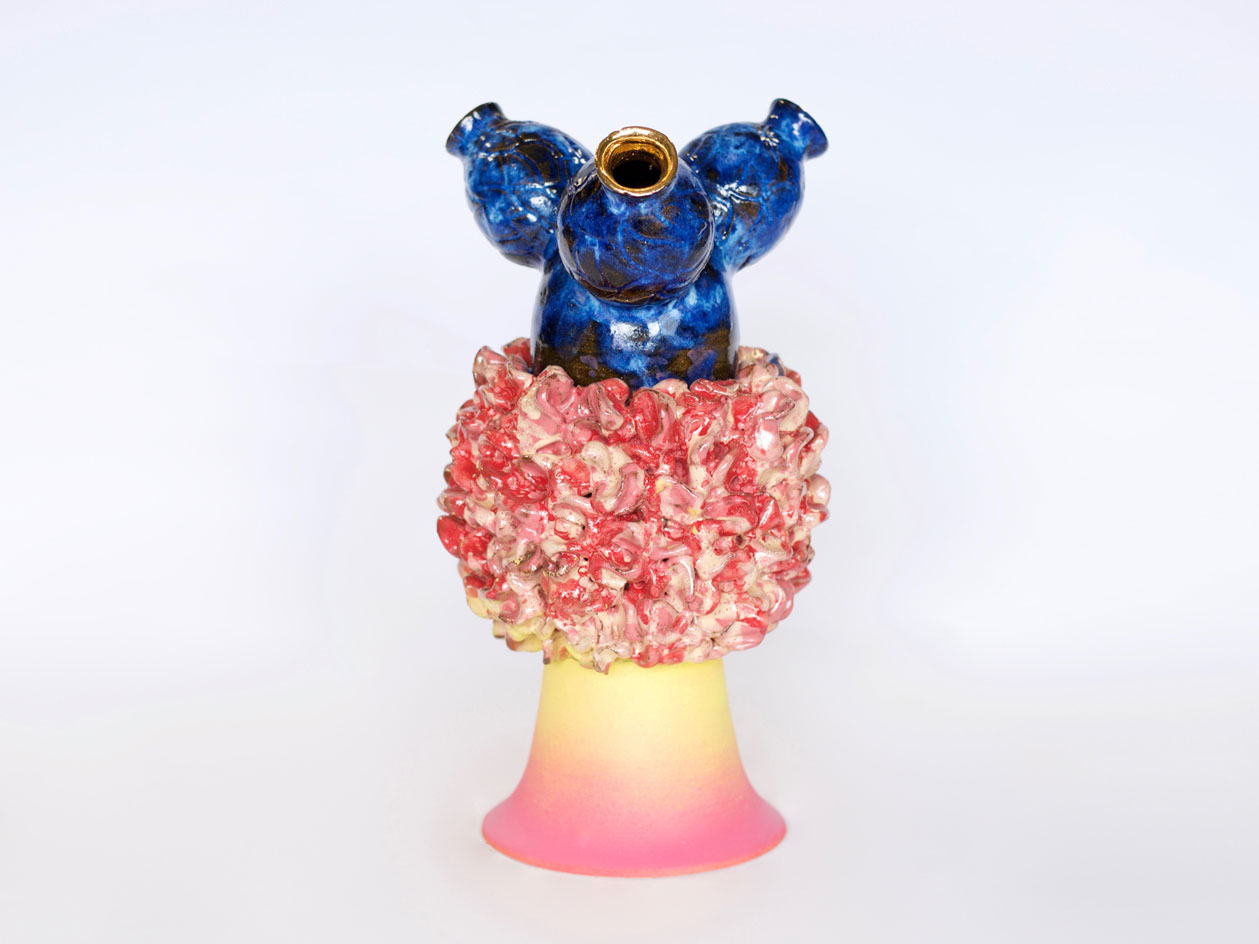
Le Tribekonia Doré, 2021, glazed and painted ceramics: blend of white and black stoneware from Iowa, U.S - Tamba, Japan – Sè, Benin – Bizen, Japan. Blue, pink, red glazes, matte orange and yellow paint, gold.
INFORMATION
‘Dans Mon Jardin...’ by King Houndekpinkou runs from 7 September - 2 October at Galerie Vallois, Paris. vallois.com
ADDRESS
41 Rue de Seine
75006 Paris
Minako Norimatsu is a Japanese journalist and consultant based in Paris. Extremely curious about everything creative, her field ranges from fashion to art, dance, hospitality and travel. She has interviewed many Japanese fashion designers and artists for Wallpaper*, as well as non-Japanese creatives whose inspirations are drawn from Japan.
-
 Put these emerging artists on your radar
Put these emerging artists on your radarThis crop of six new talents is poised to shake up the art world. Get to know them now
By Tianna Williams
-
 Dining at Pyrá feels like a Mediterranean kiss on both cheeks
Dining at Pyrá feels like a Mediterranean kiss on both cheeksDesigned by House of Dré, this Lonsdale Road addition dishes up an enticing fusion of Greek and Spanish cooking
By Sofia de la Cruz
-
 Creased, crumpled: S/S 2025 menswear is about clothes that have ‘lived a life’
Creased, crumpled: S/S 2025 menswear is about clothes that have ‘lived a life’The S/S 2025 menswear collections see designers embrace the creased and the crumpled, conjuring a mood of laidback languor that ran through the season – captured here by photographer Steve Harnacke and stylist Nicola Neri for Wallpaper*
By Jack Moss
-
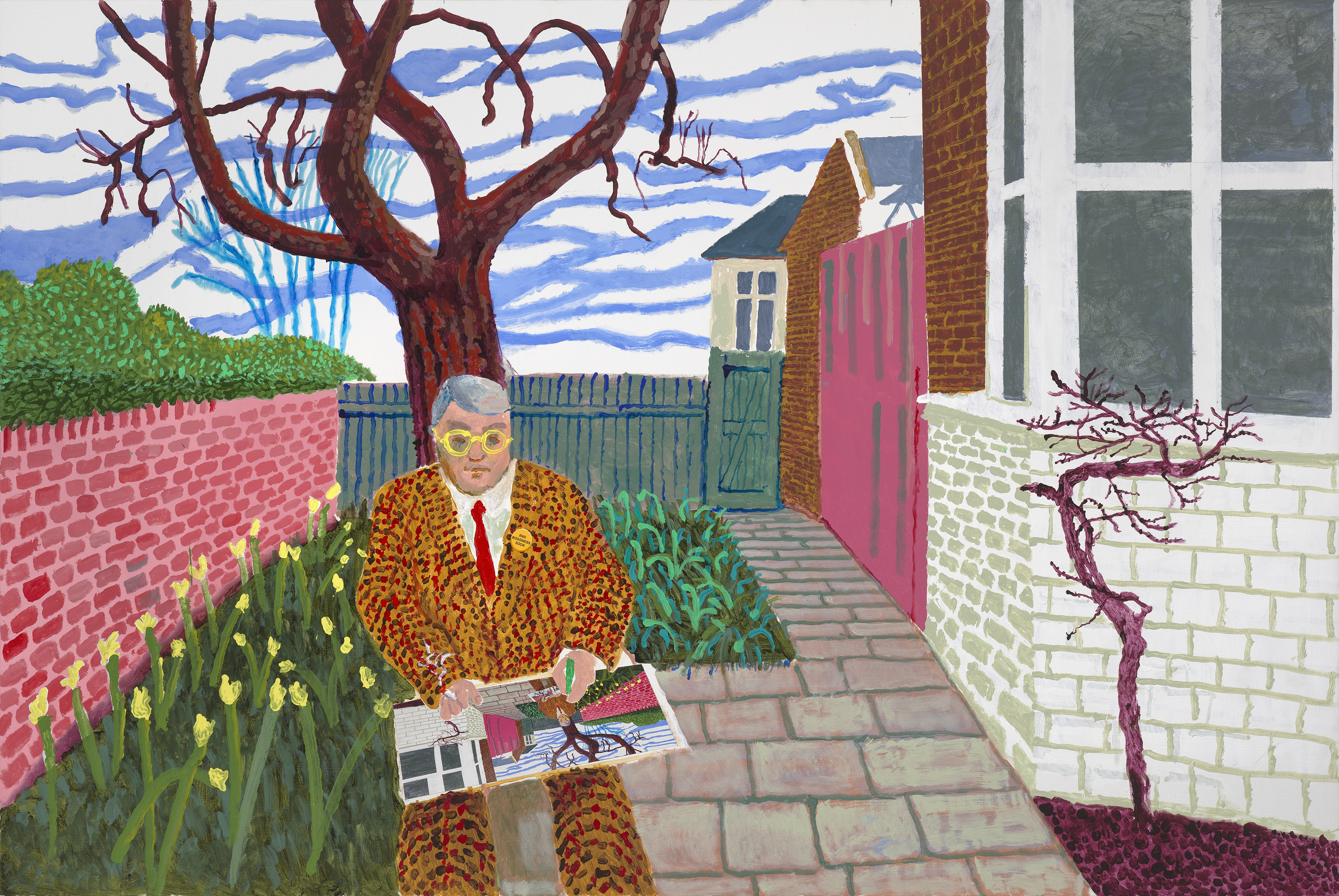 ‘David Hockney 25’: inside the artist’s blockbuster Paris show
‘David Hockney 25’: inside the artist’s blockbuster Paris show‘David Hockney 25’ has opened at Fondation Louis Vuitton in Paris. Wallpaper’s Hannah Silver took a tour of the colossal, colourful show
By Hannah Silver
-
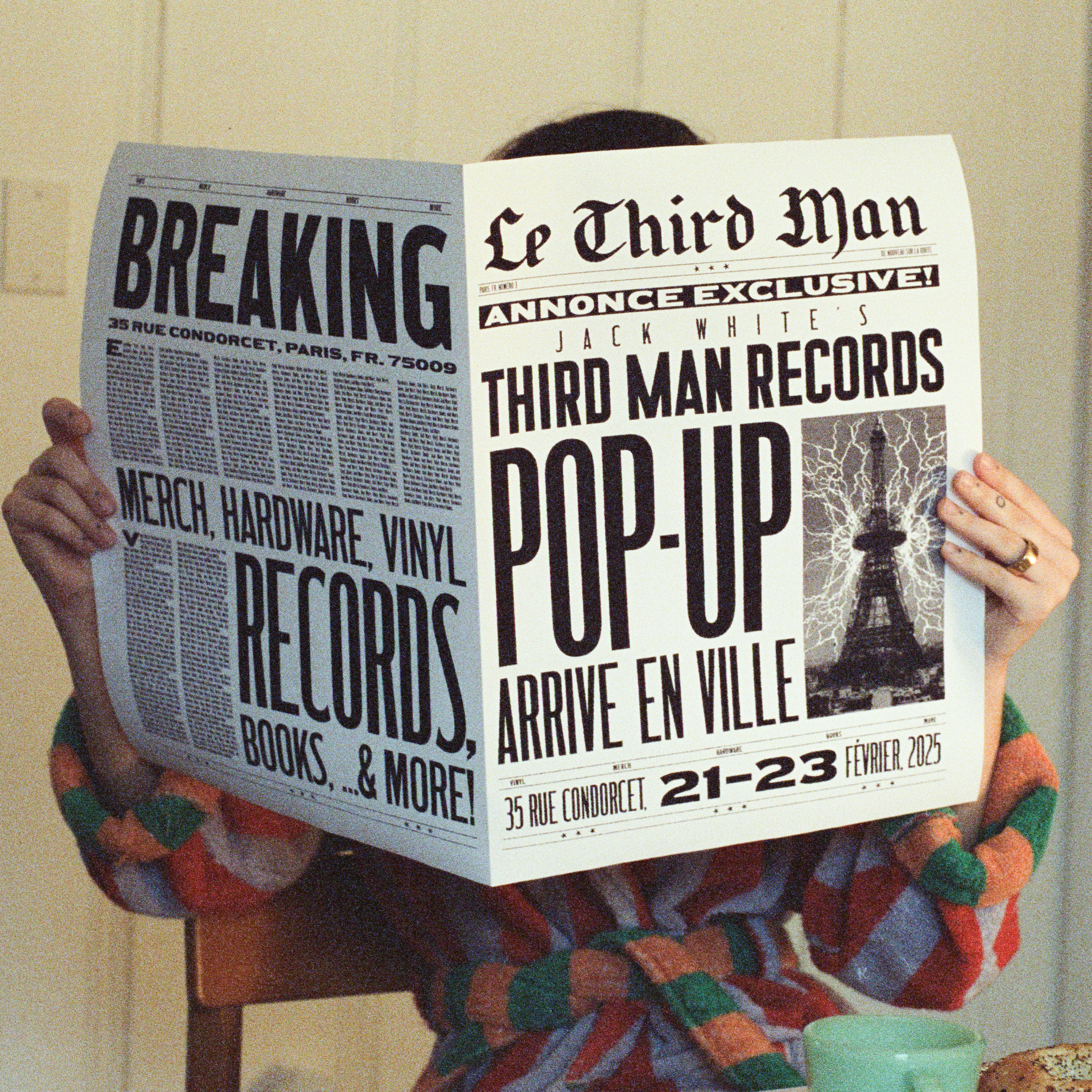 Jack White's Third Man Records opens a Paris pop-up
Jack White's Third Man Records opens a Paris pop-upJack White's immaculately-branded record store will set up shop in the 9th arrondissement this weekend
By Charlotte Gunn
-
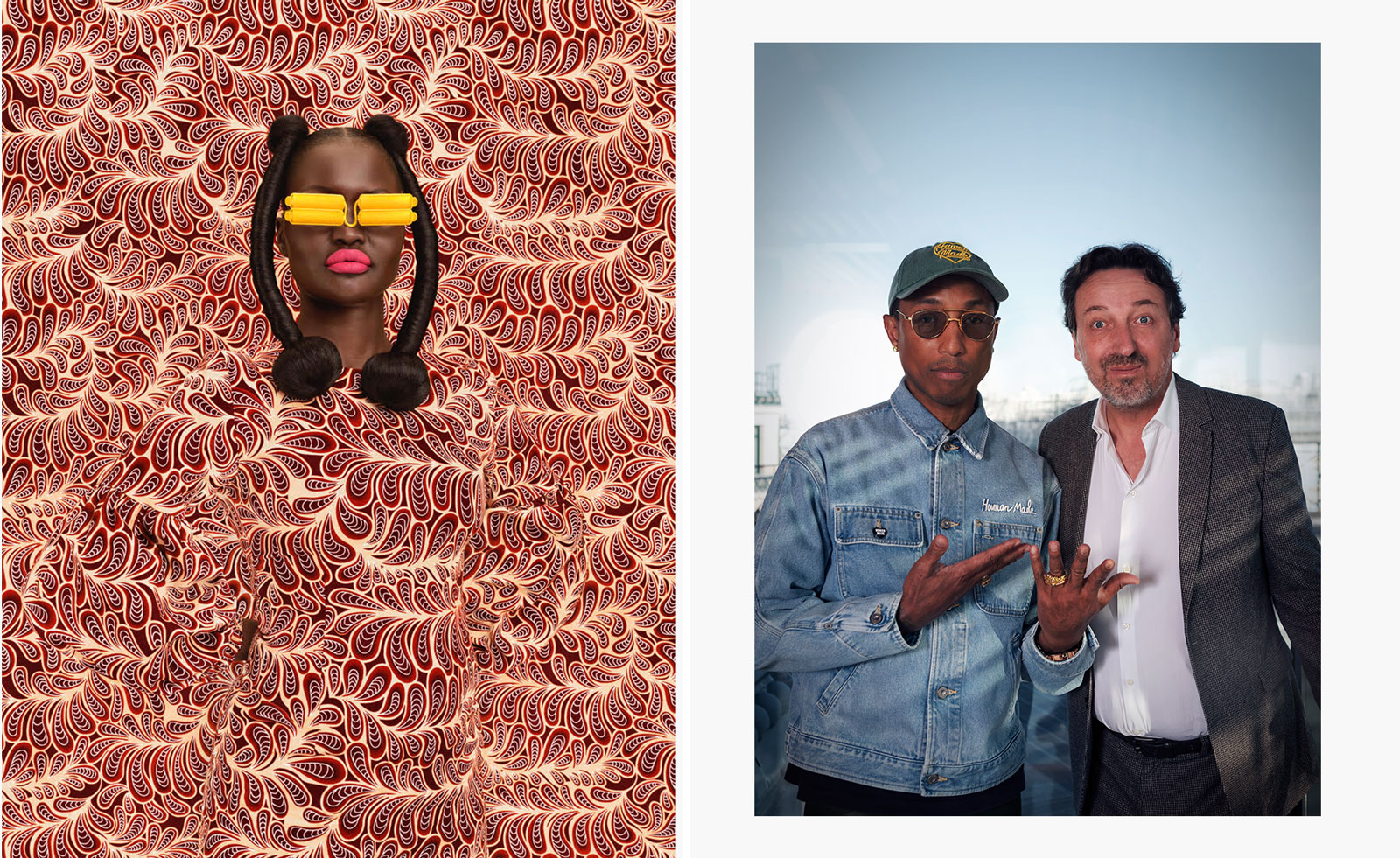 ‘The Black woman endures a gravity unlike any other’: Pharrell Williams explores diverse interpretations of femininity in Paris
‘The Black woman endures a gravity unlike any other’: Pharrell Williams explores diverse interpretations of femininity in ParisPharrell Williams returns to Perrotin gallery in Paris with a new group show which serves as an homage to Black women
By Amy Serafin
-
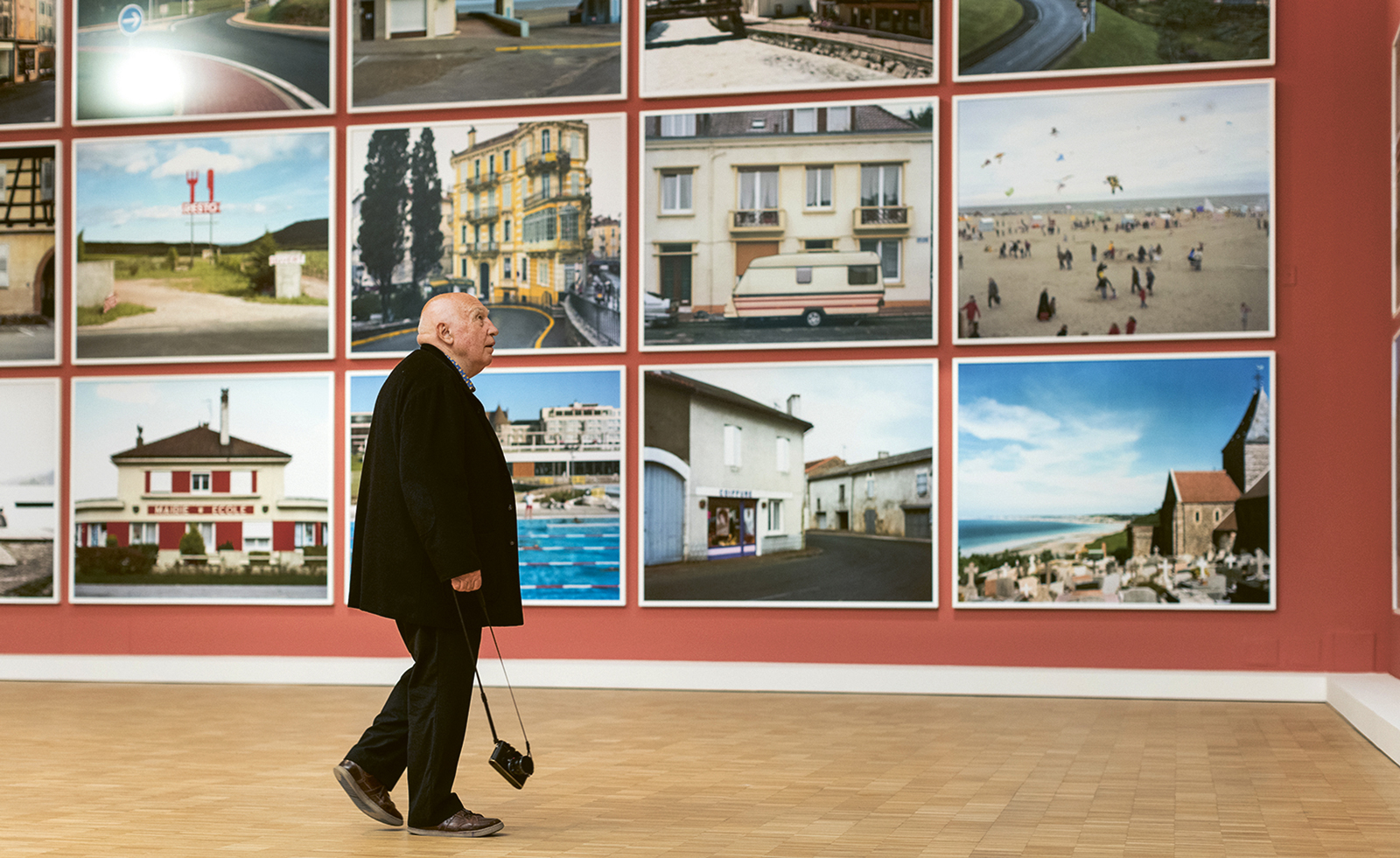 What makes fashion and art such good bedfellows?
What makes fashion and art such good bedfellows?There has always been a symbiosis between fashion and the art world. Here, we look at what makes the relationship such a successful one
By Amah-Rose Abrams
-
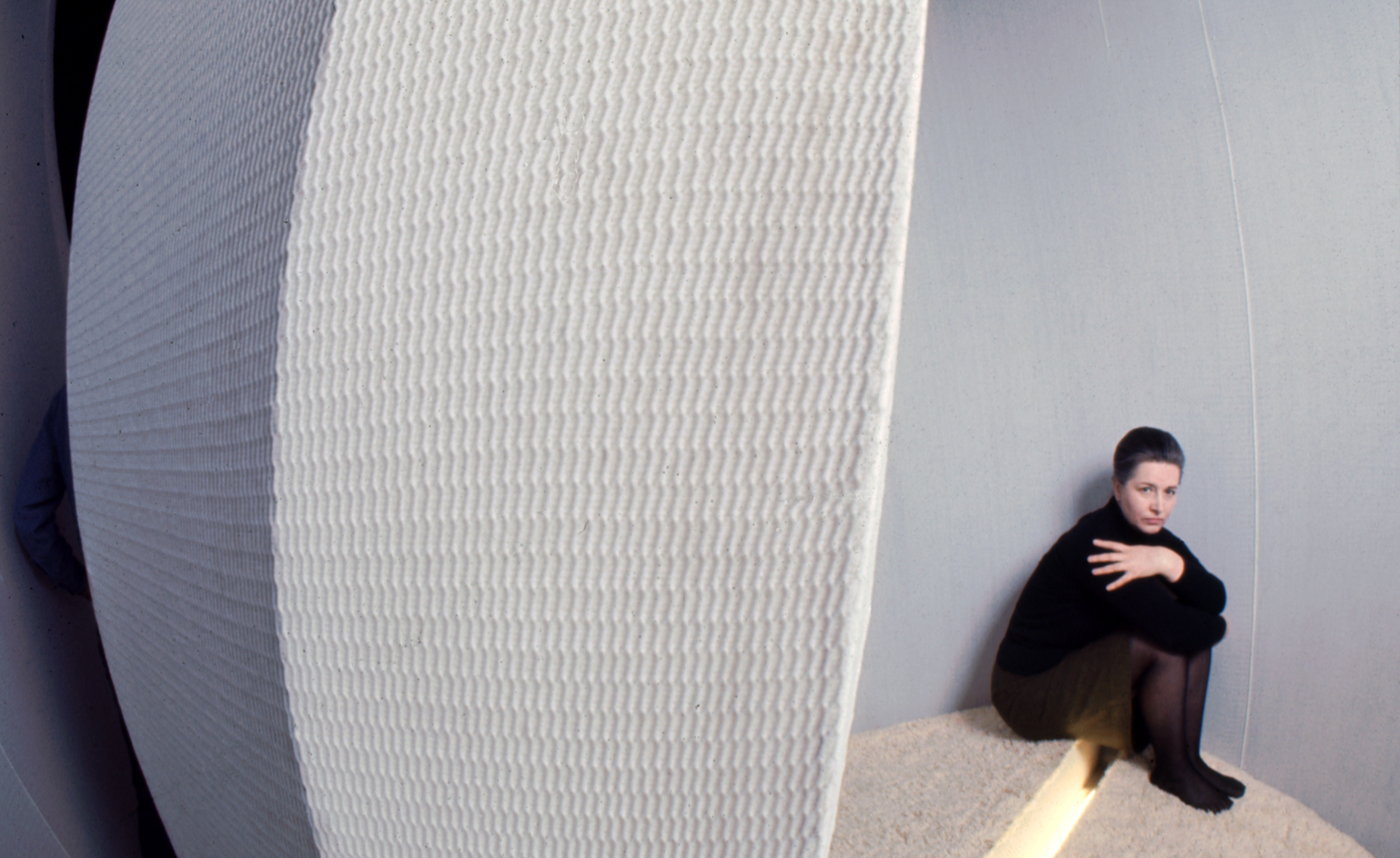 Architecture, sculpture and materials: female Lithuanian artists are celebrated in Nîmes
Architecture, sculpture and materials: female Lithuanian artists are celebrated in NîmesThe Carré d'Art in Nîmes, France, spotlights the work of Aleksandra Kasuba and Marija Olšauskaitė, as part of a nationwide celebration of Lithuanian culture
By Will Jennings
-
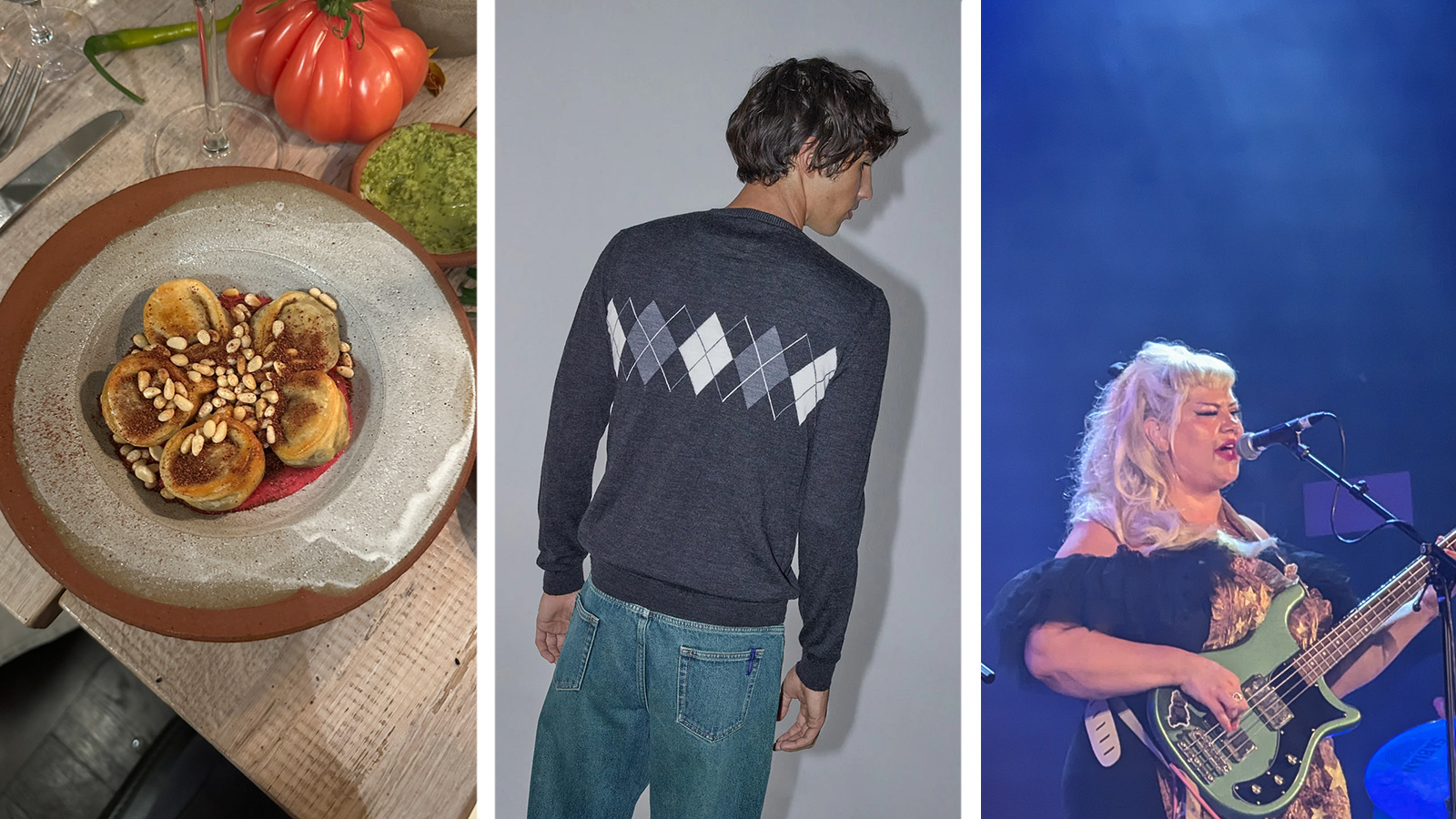 Out of office: what the Wallpaper* editors have been doing this week
Out of office: what the Wallpaper* editors have been doing this weekInvesting in quality knitwear, scouting a very special pair of earrings and dining with strangers are just some of the things keeping the Wallpaper* team occupied this week
By Bill Prince
-
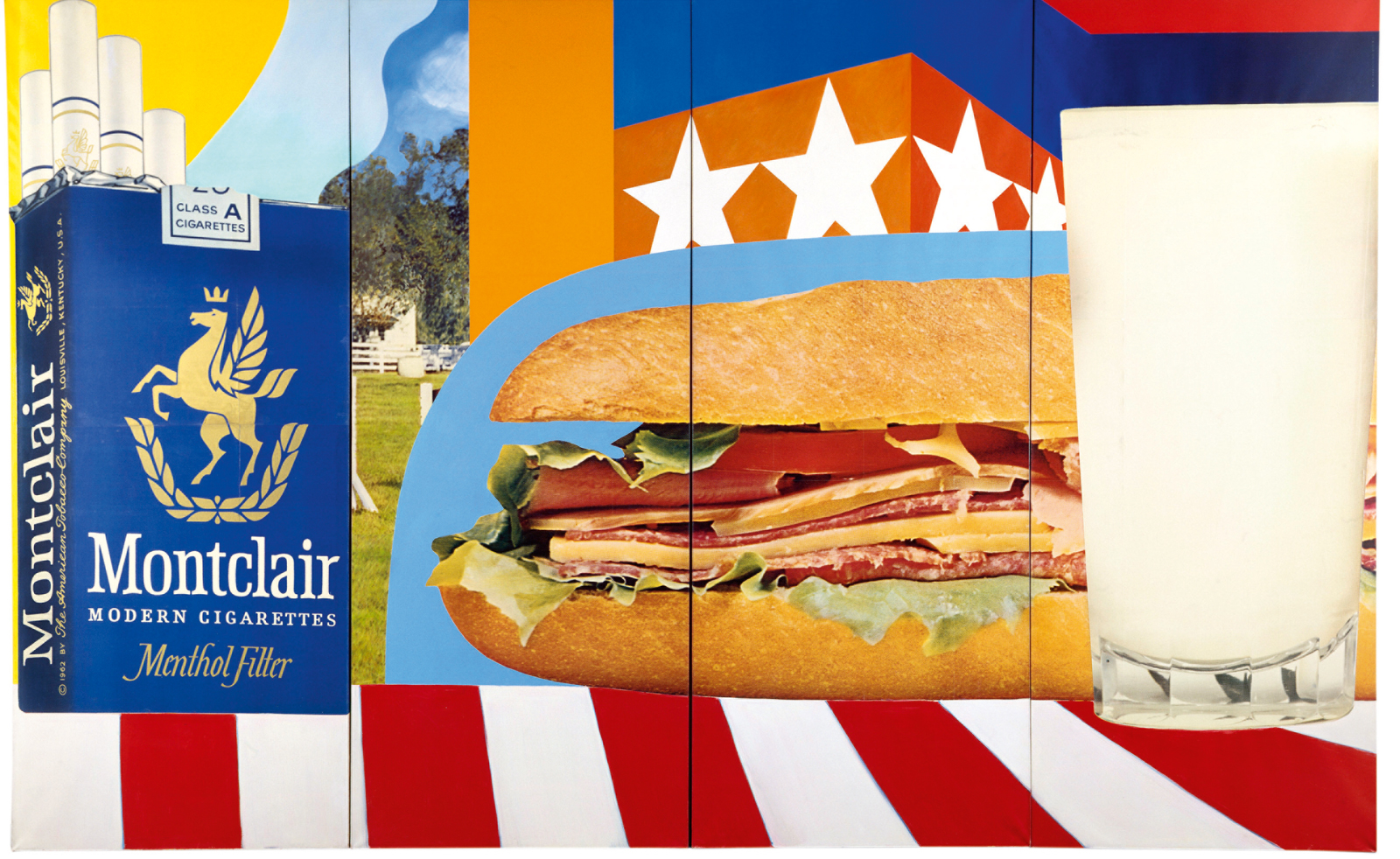 Tom Wesselmann’s enduring influence on pop art goes under the spotlight in Paris
Tom Wesselmann’s enduring influence on pop art goes under the spotlight in Paris‘Pop Forever, Tom Wesselmann &...’ is on view at Fondation Louis Vuitton in Paris until 24 February 2025
By Ann Binlot
-
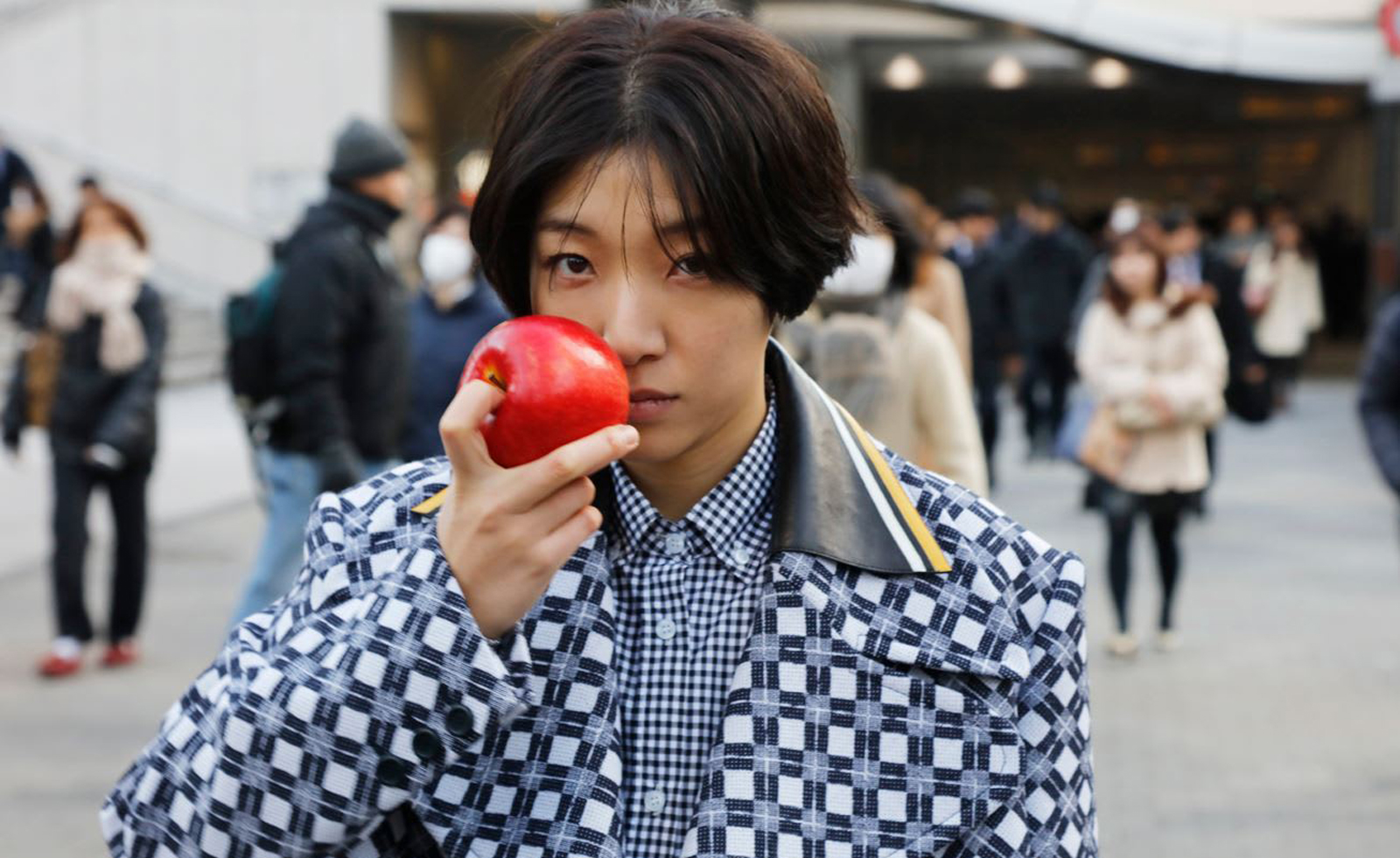 Miu Miu’s Women’s Tales film series comes to life for Art Basel Paris
Miu Miu’s Women’s Tales film series comes to life for Art Basel ParisIn ‘Tales & Tellers’, interdisciplinary artist Goshka Macuga brings Miu Miu’s Women’s Tales film series for Art Basel Paris to life for the public programme
By Amah-Rose Abrams